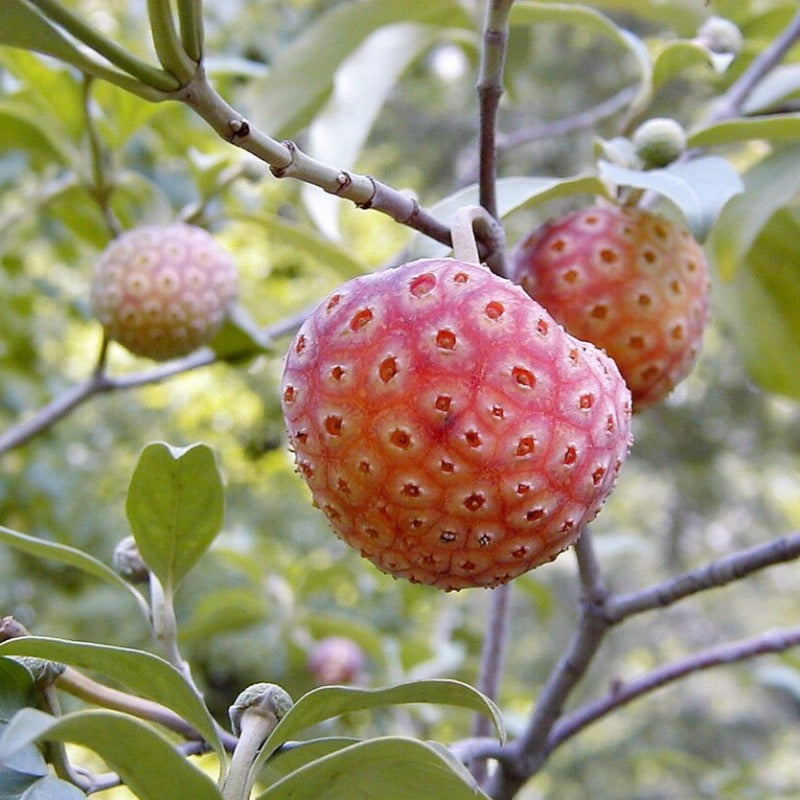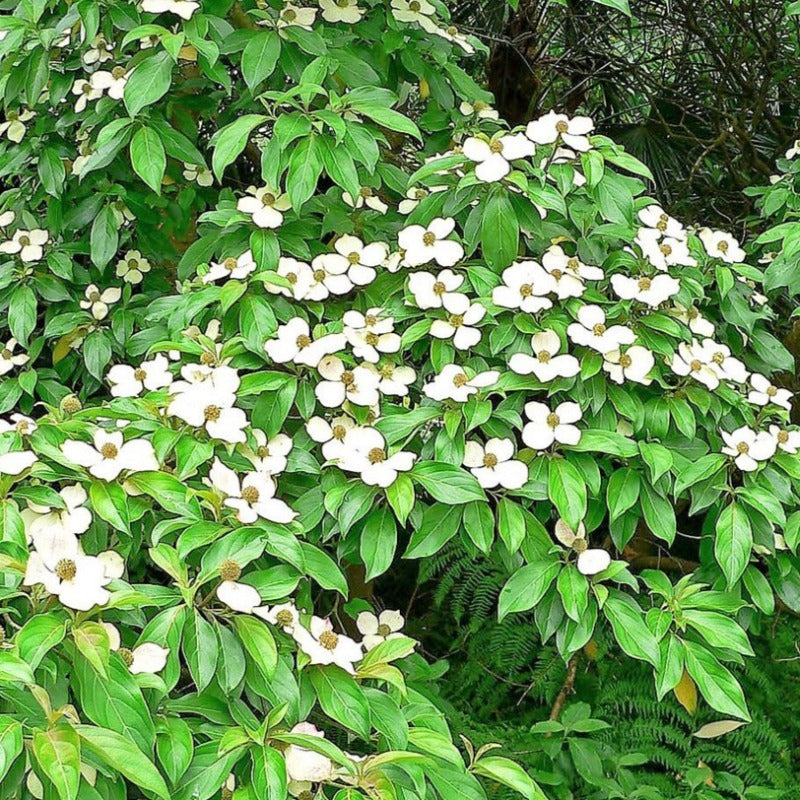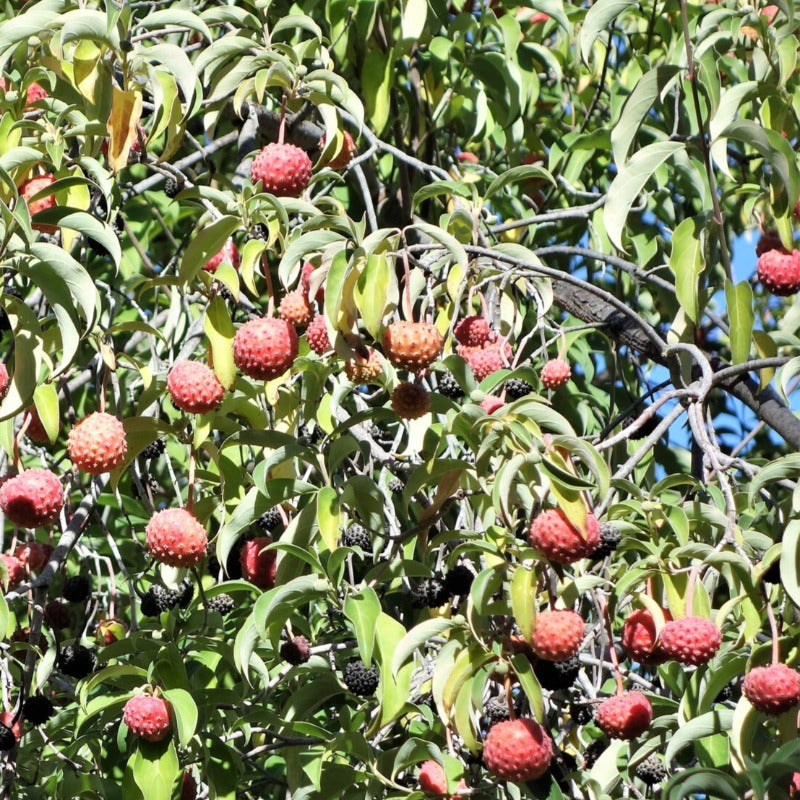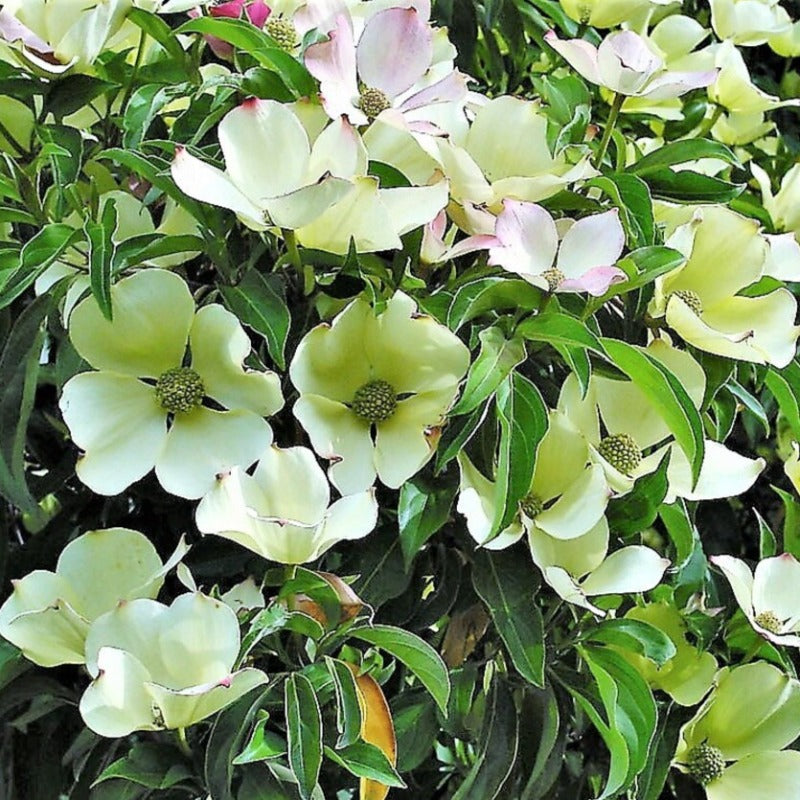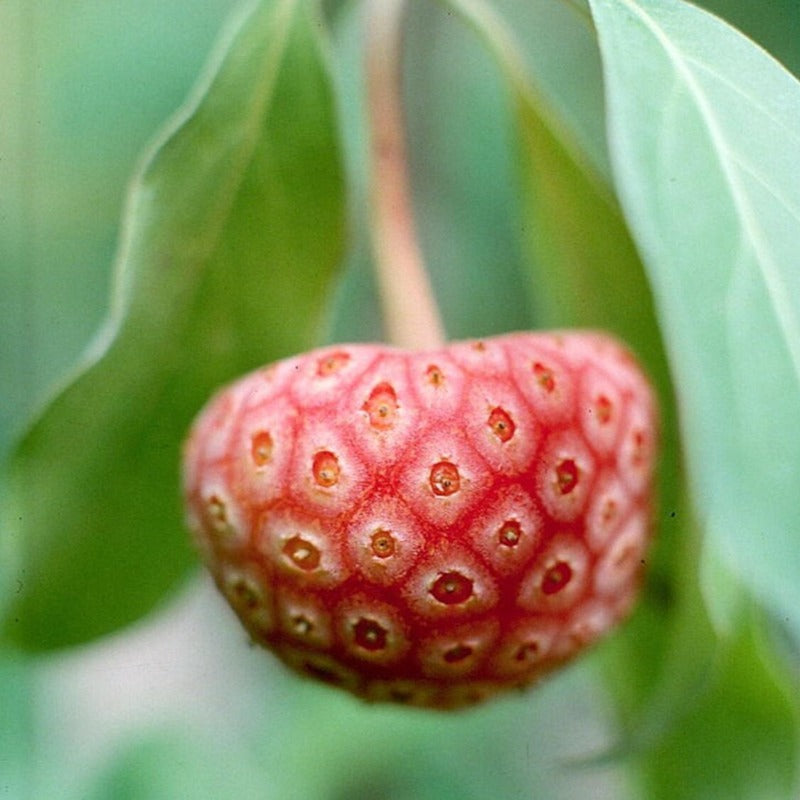- Historical context: The Himalayan Dogwood, also known as Cornus capitata, is a species of dogwood native to the Himalayan region. It has been cultivated for centuries for its ornamental value and its edible fruits.
- Geographical origination: This tree is native to the Himalayan region, particularly found in countries like Nepal, Bhutan, and parts of India and China.
- Relevant cultural significance: In its native regions, the Himalayan Dogwood is often valued for its beautiful flowers and edible fruits. It is also used in traditional medicine in some cultures.
- Time period of discovery: The exact time period of discovery is not well-documented, but it has been known and utilized by local populations for many centuries.
- Original habitat: The Himalayan Dogwood typically grows in forested areas, often at elevations between 1,500 to 3,000 meters.
- Notable historical uses: Historically, the fruits of the Himalayan Dogwood have been consumed both fresh and dried. The tree has also been used for ornamental purposes in gardens and landscapes.
- Ideal temperature range: The Himalayan Dogwood thrives in temperate climates with cool to mild temperatures, ideally between 10°C to 25°C (50°F to 77°F).
- Soil type: It prefers well-drained, fertile soils with a slightly acidic to neutral pH (5.5 to 7.0).
- Sunlight requirements: This tree grows best in partial shade to full sun. It can tolerate some shade but will flower more profusely in sunnier locations.
- Watering needs: Regular watering is essential, especially during dry periods. The soil should be kept consistently moist but not waterlogged.
- Planting season: The best time to plant Himalayan Dogwood seeds is in the spring or early autumn.
- Germination time: Germination can take several weeks to a few months, depending on the conditions. Stratification (a period of cold treatment) may improve germination rates.
- Growth cycle duration: The tree can take several years to reach maturity, typically flowering and fruiting after 3-5 years.
- Common pests and diseases: Common pests include aphids and scale insects. Diseases such as powdery mildew and leaf spot can also affect the tree.
- Companion planting advice: Himalayan Dogwood can be planted alongside other shade-tolerant plants and shrubs. It benefits from the company of plants that do not compete aggressively for nutrients.
- Common challenges and solutions: One common challenge is ensuring adequate moisture without overwatering. Mulching can help retain soil moisture. Regular monitoring for pests and diseases is also important.
- Nutritional values: The fruits of the Himalayan Dogwood are rich in vitamins, particularly vitamin C, and contain various antioxidants.
- Health benefits: The fruits are known for their immune-boosting properties due to their high vitamin C content. They are also used in traditional medicine to treat digestive issues and inflammation.
- Culinary uses: The fruits can be eaten fresh, dried, or used in jams and preserves. They have a sweet-tart flavor that is enjoyed in various culinary applications.
- Medicinal uses: In traditional medicine, different parts of the tree, including the bark and leaves, are used to treat ailments such as diarrhea, fever, and skin conditions.
- Other unique advantages: The Himalayan Dogwood is valued for its ornamental beauty, with its striking flowers and attractive foliage making it a popular choice for gardens and landscapes.
